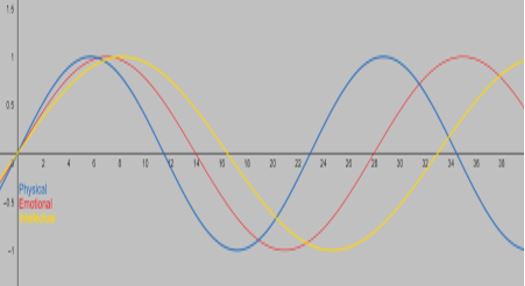Bridging Tridosha Siddhanta and Biorhythm Theory: Uniting Ancient Dosha Principles with Modern Cyclic Patterns
DOI:
https://doi.org/10.21760/jaims.9.8.10Keywords:
Tridosha Siddanth, biorhythm theory, AyurvedAbstract
This article explores the conceptual intersections between Tridosha Siddhanta, the foundational theory of Ayurveda, and the Biorhythm Theory, a modern psychological model of cyclical biological and emotional states. Tridosha Siddhanta posits that human health and wellness are governed by the balance of three fundamental Doshas Vata, Pitta, and Kapha each representing a combination of the five elements and their dynamic influences on physiological and psychological functions. In contrast, Biorhythm Theory suggests that individuals experience predictable cycles of physical, emotional, and intellectual states influenced by inherent rhythms. By analyzing both systems, this article seeks to elucidate how the cyclical nature of biorhythms might correlate with the doshic imbalances and fluctuations described in Ayurveda. It aims to provide a comprehensive understanding of how integrating these two paradigms can enhance approaches to personalized health and wellness, offering a holistic perspective that bridges ancient wisdom with contemporary scientific insights.
Downloads
References
Maharsi Sushruta. Susruta Samhita. 2nd ed. Varanasi: Chaukhambha Sanskrit Sansthan; 2019. Sharir Sthana, 4/62. Edited by Kaviraja Ambikadutta Shastri. Maharsi Agnivesha.
Charaka Samhita. 4th ed. Varanasi: Chowkhamba Krishnadas Academy; 2017. Sutra Sthan 1/57.
Srimadvagbhata Astanga Hrdayam. Delhi: Chaukhamba Sanskrit Pratishthan; Sutra Sthana 1/6. Edited with Nirmala Hindi Commentary by Brahmanand Tripathi.
Text book of kriya sharir by dr.subhash ranade.
https://en.wikipedia.org/wiki/Biorhythm_(pseudoscience).
Ayurvedic kriya sharir book by ranjitrai desai.
https://www.medicinenet.com/biorhythms/article.html.
Text book of Ayurvediya sharir kriya vigyan by dr.krishna kumar Mishra and prof. mahendra singh mina.















